Best
STUDENT
VIOLIN
100 High-Quality
Student Violin
-
Overall:
Durable Ebony Pegs and Ebonised Fingerboard -
Best Feature:
Hand-Carved
Maple and Spruce Body -
TedScore™:
8/10
Best
INTERMEDIATE
VIOLIN
-
Overall: 4/4-size violin with a lightweight case, real brazilwood bow, and Schwarz rosin
-
Best Feature: Spruce top and maple back/sides have been aged over five years
-
TedScore™: 9/10
Best
AFFORDABLE
VIOLIN
by Gear4music An ideal first full-size
violin for beginners
-
Overall:
Constructed from high-quality tonewoods -
Best Feature:
Smooth fingerboard allows for easy hand position changes -
TedScore™:
8.7/10
If you want to see yourself improve and be one of the best violinists in the world, you definitely need to start reading and learning music theory for violin.
Think of it as your musical map, guiding you through the melodies, harmonies, and emotions your violin can express.
It might sound daunting to students at first, given the fact that music theory tackles detailed topics and different terminologies that might sound out of this world.
It’s okay! Before I became a professional violinist, I also felt that feeling.

That is why keep reading this article to know what is violin music theory in a way that makes you understand it easily.
As a beginner, understanding the basics of music theory will improve your technique and enhance your musical intuition.
It lets you communicate and connect with other musicians, paving the way for exciting collaborations and performances – it’s really the secret ingredient to unlocking your full potential on the strings.
Basics of Violin Music Theory
Diving into violin music theory can unlock the skills and techniques you need to play your favorite tunes.
You’re about to start a journey that will enhance your understanding and violin-playing skills.
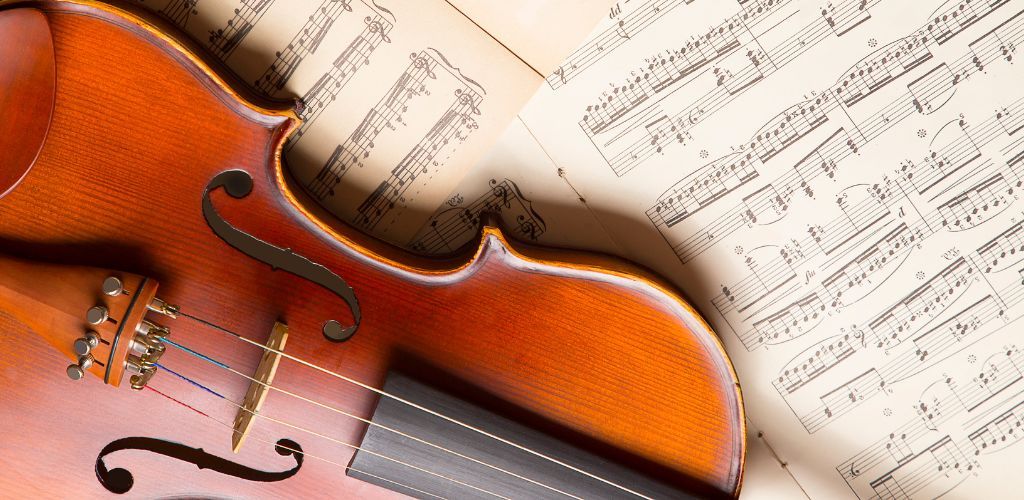
Understanding the Musical Alphabet
Think of the musical alphabet as your ABCs, but with a twist—it only goes from A to G.
Each letter represents a different pitch on your violin, starting with the open strings: G, D, A, and E.
Notes and Clefs

Musical notes are the building blocks of melody, and they are written on a staff.
When I say staff, this is not the wizard staff used in casting spells but is the five horizontal lines with four spaces you see in the first line of a piece of sheet music.
Ah, the treble clef, that fancy squiggle at the beginning of a staff, is one of your best friends for violin music.
It tells you that the notes on the staff should be played in a higher register, which is perfect for your first violinist’s voice.
Major Scales and Key Signatures
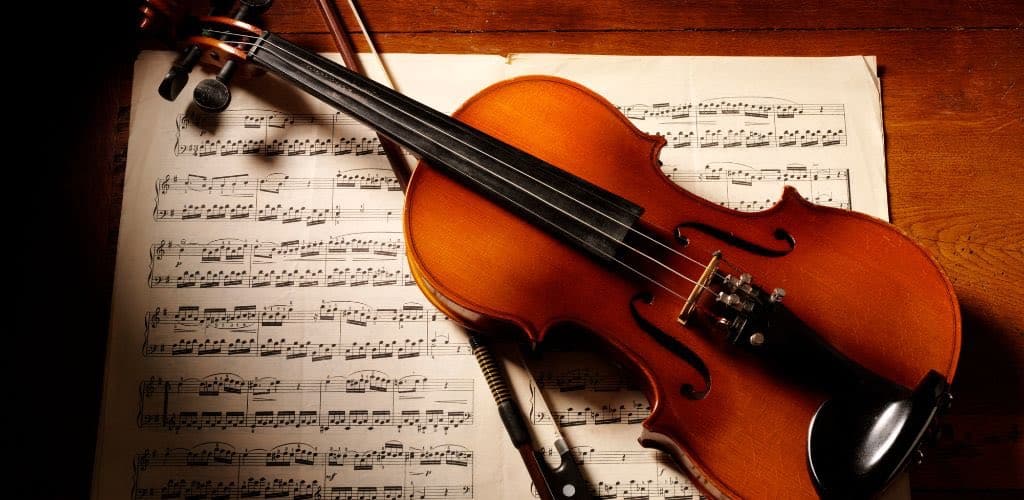
Major scales are like a family of notes that sound good together, and they follow a specific pattern:
Whole, whole, half, whole, whole, whole, half steps.
On your violin, this translates to fingers spaced apart or close together.
Key signatures live at the start of each piece of music, indicating which notes are consistently sharp or flat throughout.
Memorize these concepts, and you’ll have a map to navigate every new piece of music!
Reading Sheet Music
When you start to learn a piece of violin sheet music, you’re looking at a complex system of symbols that convey pitch, rhythm, and expression.
Becoming fluent in this musical language opens up a world of possibilities for your violin journey.

Note Identification
Your first step in reading violin sheet music is recognizing notes on the staff.
The staff is the five lines and four spaces upon which music is written. Each line and space represents a different pitch, which corresponds to a specific note on your violin.
A helpful way to remember these notes is by using mnemonics:
For the lines on the treble clef, think “Every Good Boy Does Fine,” and for the spaces, remember “FACE.”
- E - Every
- G - Good
- B - Boy
- D - Does
- F - Fine
- F
- A
- C
- E
Getting comfortable with the order of each note sitting on the staff is crucial because your fingers need to find the corresponding strings and positions on the violin to produce the right pitches.
Rhythms and Time Signatures
Understanding rhythm is very key to making music come alive.
Each note has a specific duration, often described in terms like whole notes, half notes, or quarter notes.
A whole note is held for four beats, while a half note lasts for two, and so forth. The way you play these notes is deeply linked to the piece’s time signature.
Note Durations:
Whole Note: 4 beats
Half Note: 2 beats
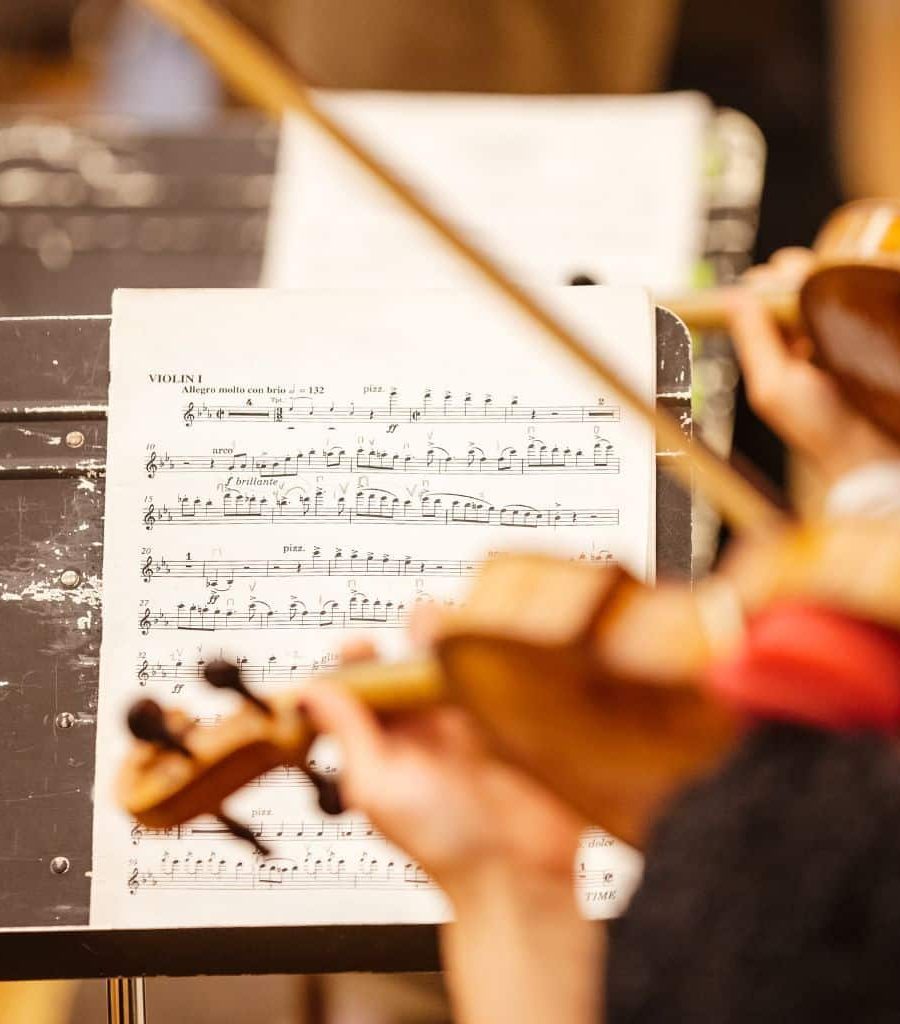
Each piece of music has a time signature placed at the beginning of the staff.
It looks like two numbers stacked on top of each other. The top number shows how many beats are in a measure, while the bottom number tells you the type of note that gets the beat.
For example, a time signature 4/4 means four beats per measure, and the quarter note gets one beat.
Keep a steady beat in your head as you play, and let the time signature guide your rhythm; this will help maintain the flow and integrity of the music.
Violin Techniques
for Beginners
Mastering the violin starts with perfecting your basics. That’s right, basics take you a very long way.
Let’s examine some foundational techniques that will help you become the next Mozart of your time.

Fundamental Bowing Techniques
Your bow is the key to the beautiful voice on the violin, but first, we must learn how to find the right pitch.
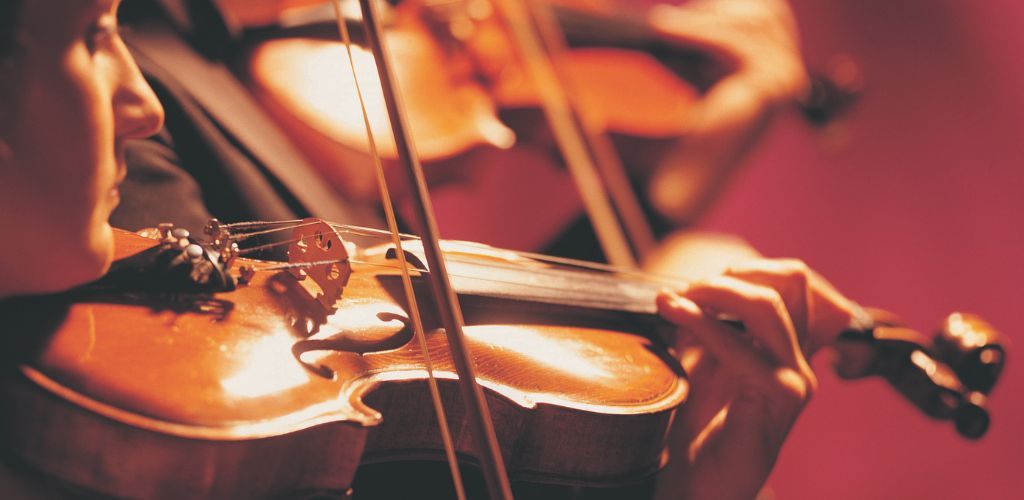
Start with detache bowing, keeping the bow smooth and even across the strings. This technique involves a rapid start and stop, with a distinct beginning and end to each note.
Now, sprinkle in some legato, where you seamlessly connect each note.
Imagine your bow as a brush painting a long, unbroken line of different notes, producing a melodic picture on a sonic canvas.
Then, try the opposite of legato, staccato. In staccato, you disconnect each note by shortening the time you play it.
Imagine it as if you need to play a broken line, each short separated line represents the length on how a note should be played.
PRIMAVERA 100
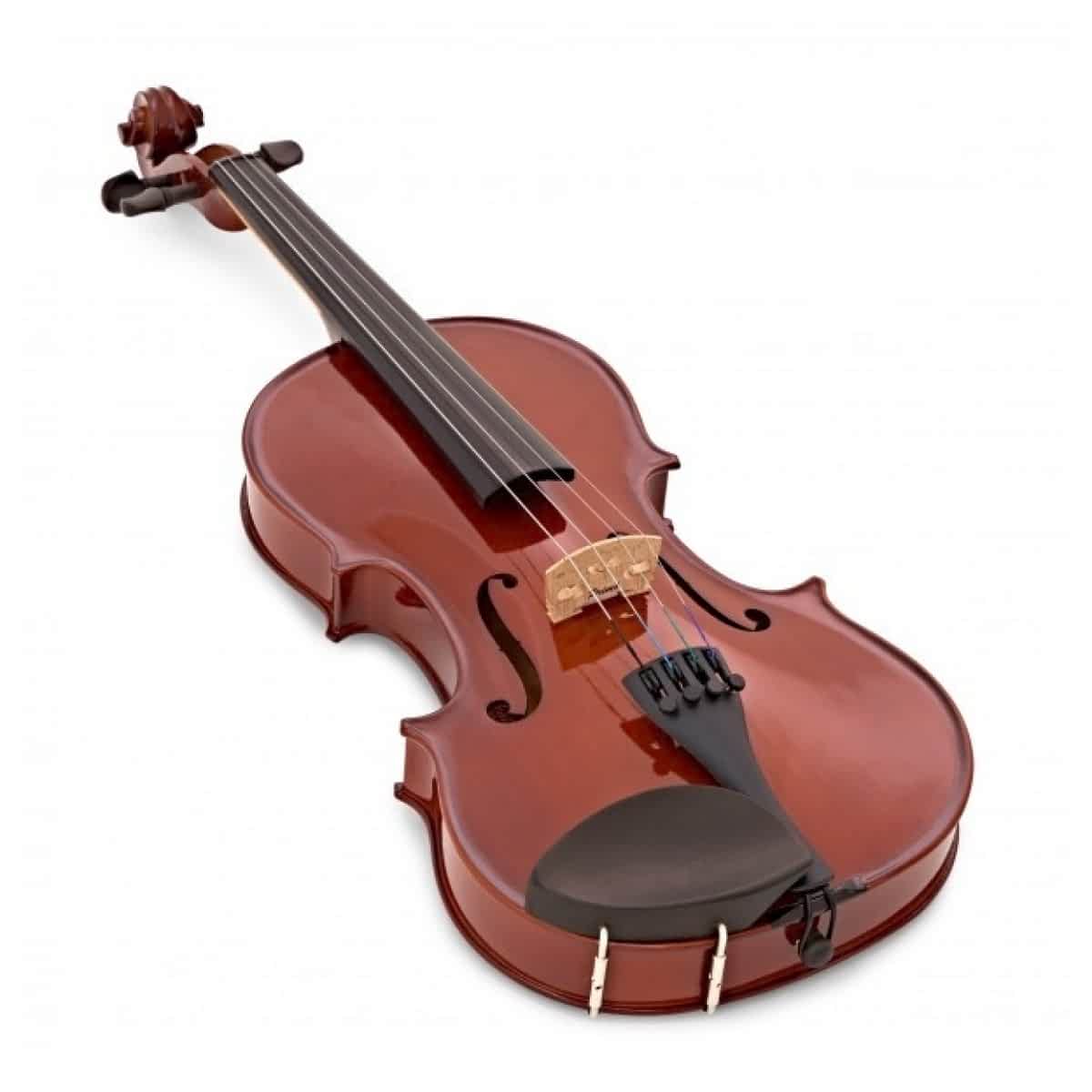
FEATURES: Durable Ebony Pegs and Ebonized Fingerboard
OTHER INFO: Ebony fittings - chin rest and tuning pegs
- Comes with a case, bow, and resin
- Ebony fittings - chin rest and tuning pegs
- Easy tuning is made possible with fine tuners
- Absolutely no disadvantages!
When you click ‘Check Price’, you’ll see there are loads of great places to buy this item. Our personal favorite is Sweetwater for the US, and Thomann and Gear4Music for the UK & Europe.
They are the largest music retailers, with excellent customer service, competitive prices, really fast shipping, and the longest guarantees.
The professional musician who wrote this article combined many things,
from the product build, manufacturer’s reputation through to feedback
from other users, to create our famous TedScore™.
Finger Patterns and Positions
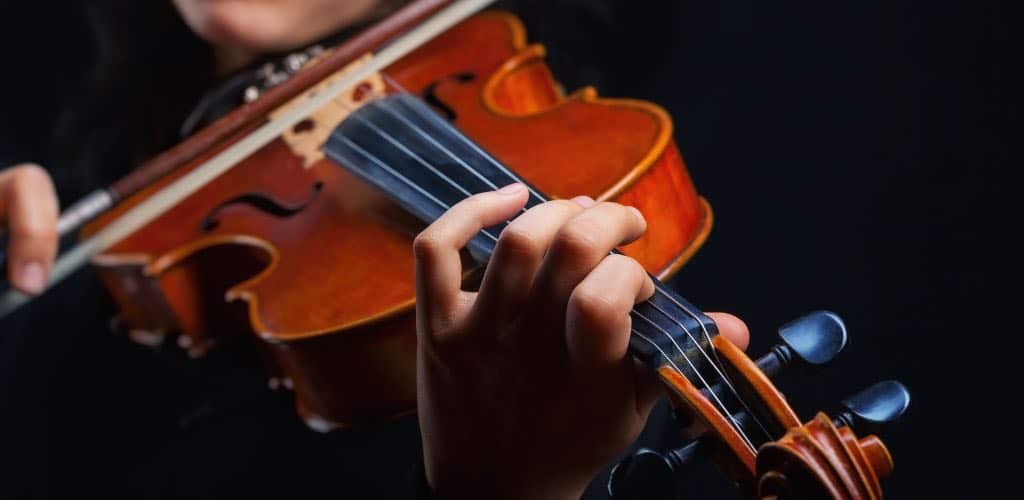
Remember, aside from knowing how the bowing is, the map to musicality also is dependent at your fingertips.
Get comfy with your first position, where you will spend a lot of your early days. Each finger corresponds to a different note, like keys on a piano.
Here’s a visual to guide your practice:
| FINGER | Note on G String | Note on D String | Note on A String | Note on E String |
|---|---|---|---|---|
| 1 | A | E | B | F# |
| 2 | B | F# | C# | G# |
| 3 | C | D | G | A |
| 4 | D | A | E | B |
Hone your technique by practicing scales within this position to familiarize yourself with the spacing between notes. It’s all about a mental picture of the fingerboard.
There are a lot of scales you can practice, both the major and the minor scales!
You can start learning the major scales first before exploring the minor scales, such as the natural minor scale, harmonic minor scale, and melodic minor scale.
Music intervals, the spaces between notes, are the building blocks of melody. By understanding and practicing these spaces, you create the foundation for pitch-perfect playing.
Student Full-Size Violin by Gear4music
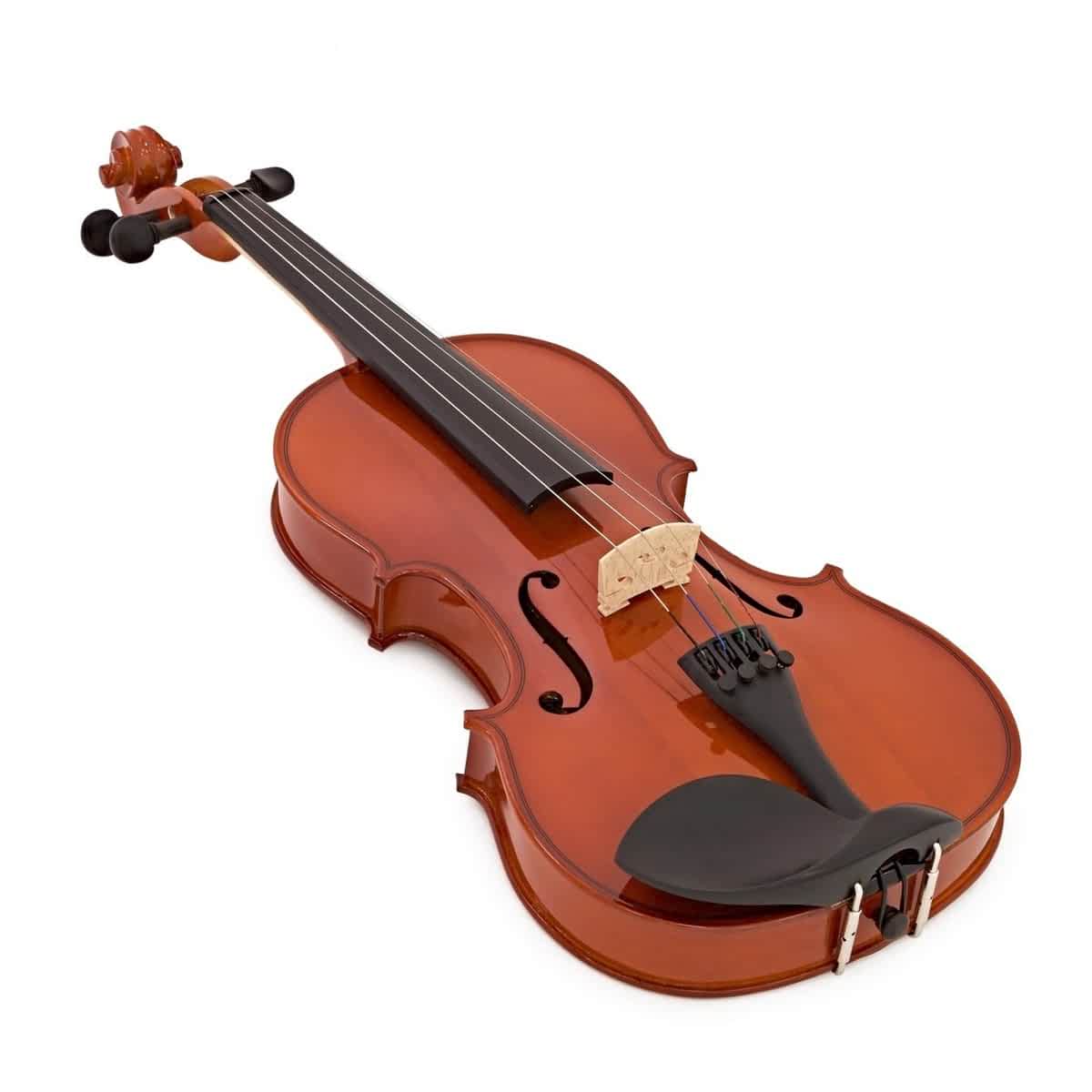
FEATURES: Constructed from high-quality tonewoods
OTHER INFO: traditional maple and spruce construction provides a warm and authentic tone
- Fine tuners allow for fast and stable tuning
- Includes a bow, hard foam case, and rosin
- No Cons at all!
When you click ‘Check Price’, you’ll see there are loads of great places to buy this item. Our personal favorite is Sweetwater for the US, and Thomann and Gear4Music for the UK & Europe.
They are the largest music retailers, with excellent customer service, competitive prices, really fast shipping, and the longest guarantees.
The professional musician who wrote this article combined many things,
from the product build, manufacturer’s reputation through to feedback
from other users, to create our famous TedScore™.
Practicing Scales and Arpeggios
Integrating scales and arpeggios into your practice routine is a sure way to excel at the violin. They are your musical alphabet, laying the foundation for more advanced pieces.
If you want to be a violinist that matters like Bach and Paganini, you have to learn these!

Major Scale Patterns
Your journey with scales begins with the D major scale, which is a great starting point for violinists.
With two sharps – F# and C# – it allows you to become familiar with the fingerboard in a comfortable key.
The A major scale introduces an additional sharp, G#, training your fingers to adjust to new positions on the fingerboard.
Finally, the G major scale, with one sharp, provides a different hand frame on the violin, essential for versatility.
When practicing these scales, remember to start slowly and work on consistent intonation. Speed is a friend you’ll meet later after accuracy and tone have set a solid groundwork!
Building Arpeggios
The arpeggio pattern essentially plays the first, third, fifth, and eighth notes of a scale and then descends back down.
It’s like scaling a musical ladder where only a few specific rungs are stepped on!
When you start with the D major arpeggio, you’ll simply play D-F#-A-D and then descend back to A-F#-D.
To build your A major arpeggio, follow the same pattern starting on A: A-C#-E-A, then return to E-C#-A.
Remember to keep your bowing smooth and your fingers precise. Arpeggios are like the neat bullet points of a musical pitch—crisp and to the point.
Playing arpeggios lets you focus on the essence of a key’s harmony. It gives your fingers a roadmap for common chord progressions you’ll encounter in your music pieces.
Expression and Articulations
When you want to express the soul of a violin piece, your use of dynamics and articulations play a big role in this.
Dynamic Markings
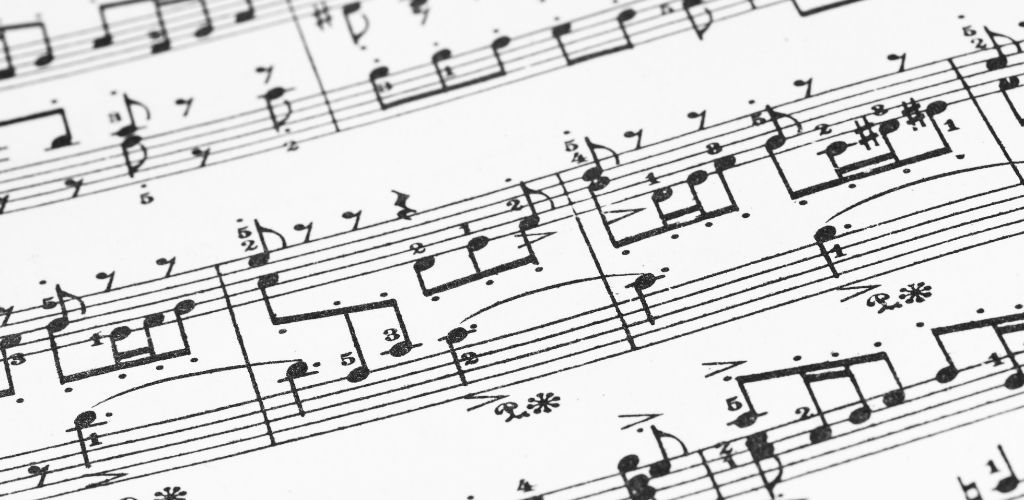
Dynamic markings are your roadmap to volume control, guiding you from the softest pianissimo (a fancy word that means to perform softly!) to the mightiest fortissimo (also a fancy word that means to perform loudly!).
You’ll see symbols like “p” for soft and “f” for loud, but it’s your touch that brings them to life.
Crescendos (<) and decrescendos (>) invite you to sculpt the intensity, letting your sound swell and fade like the tide.
Ornamentations
Ornamentations are the delightful twists and turns that add sparkle to your melodies.
- Trills (tr): Rapidly alternate between the noted pitch and the one above, creating a lively, vibrating effect. Your fingers dance on the strings, making each note shimmer.
- Turns: Weave above and below the main note in a smooth sound curve. Picture a roller coaster swiftly looping around its track.
- Mordents: A sharp, spicy wrist flick gives you a quick note above or below the principal tone. Think of it as a musical wink.
- Slides: Slide between notes with a graceful glissando, your bow flowing like honey. It’s a heart-tingling journey on a single bow stroke.
- Grace Notes: These are the subtle flourishes, tiny stepping stones leading to the main note. They’re the whispered prelude to a statement.
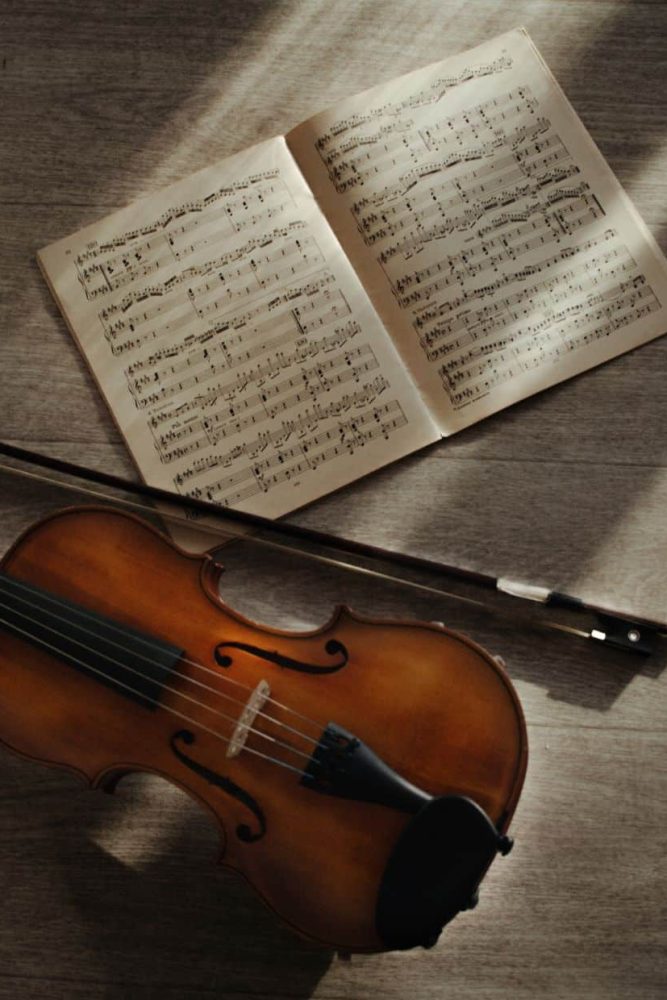
Theory for Advanced Techniques
In the realm of violin music, mastering advanced techniques opens a new dimension of expression.
Here, you’ll unravel the complexities of rhythmic agility and learn the world of harmonic systems.
Advanced Rhythmic Patterns
You may have encountered basic rhythms, but let’s notch it up, shall we?
Jazz up your repertoire with syncopation, where the unexpected beats take the spotlight. Even though this may sound a disturbance to the natural rhythm, there is still beauty to it.
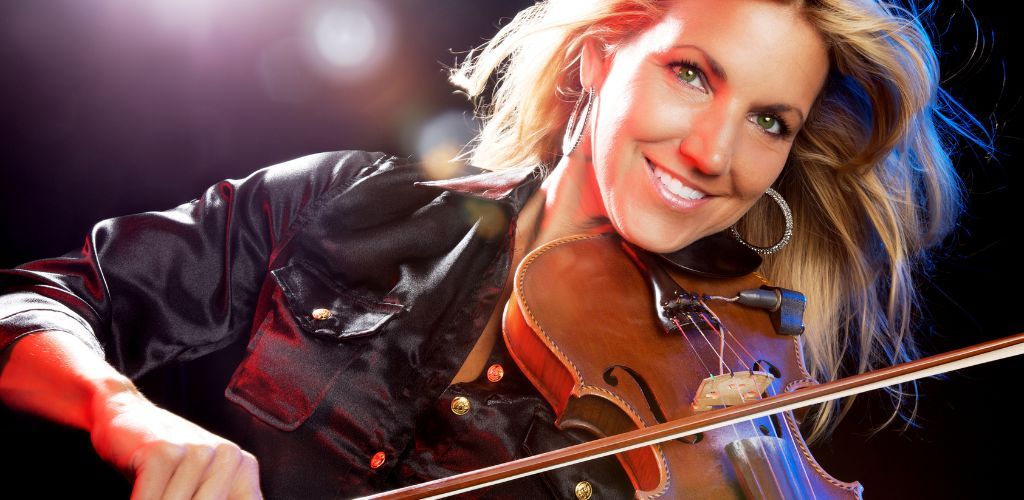
Don’t forget the Polyrhythms! Imagine playing two rhythms simultaneously; it’s the ultimate brain teaser for your fingers and your bow.
To conquer these patterns, mapping out half step pairs on your fingerings and violin’s fingerboard helps maintain precise pitch during complex rhythms.
Engaging with complex time signatures will challenge your inner metronome.
Think beyond common time; 5/8 and 7/8 are waiting to dance under your bow. They’ll twist your sense of pulse, but practice will make them second nature.
Yamaha AV7-44SG Student Violin Outfit

FEATURES: With harmonically rich tonality, thanks to tonewoods aged for over five years
OTHER INFO: With high-quality components such as a Wittner Ultra tailpiece
- Professionally adjusted and set up with premium Helicore strings
- 4/4-size violin with a lightweight case, real Brazilwood bow, and Schwarz rosin
- Expensive as compared to other violins for beginners
When you click ‘Check Price’, you’ll see there are loads of great places to buy this item. Our personal favorite is Sweetwater for the US, and Thomann and Gear4Music for the UK & Europe.
They are the largest music retailers, with excellent customer service, competitive prices, really fast shipping, and the longest guarantees.
The professional musician who wrote this article combined many things,
from the product build, manufacturer’s reputation through to feedback
from other users, to create our famous TedScore™.
Harmonic Systems
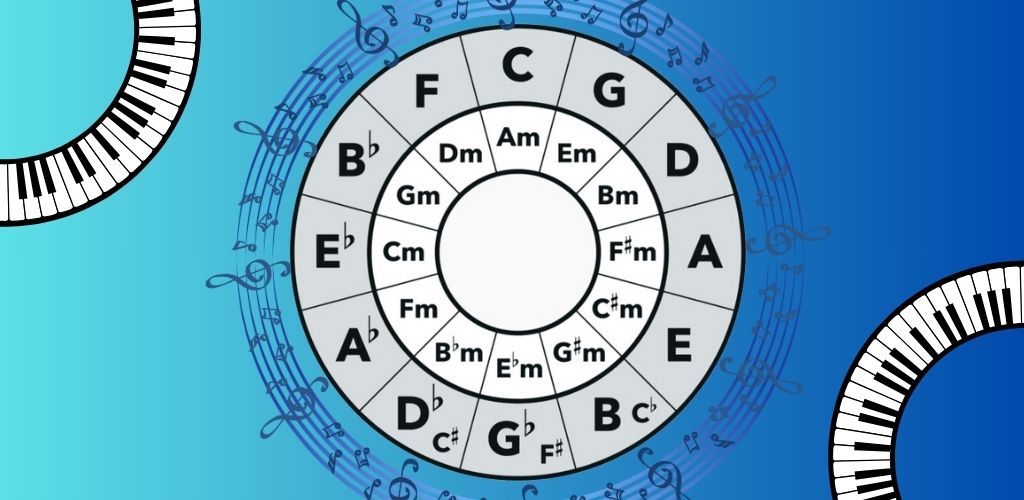
In a world of harmonics, your violin sings with overtones. Light bow strokes on precise points along a string create these delicate whispers. They add sparkle above the texture of a piece!
The circle of perfect fifth is your roadmap to understanding key relationships.
Imagine it as a wheel where each spoke represents a key. Adjacent spokes are a fifth apart, helping you to modulate smoothly between keys—even into the territories of minor key signatures.
Harmony is the soul of music, and your violin can voice it.
Double stops and chords aren’t just for pianists—your four strings can harmonize, too. Delve into chord progressions, and you’ll see how minor key signatures color the mood with their distinct tonal narrative.
Learning Resources
and Tools
The good thing about the digital age is that you have access to a treasure trove of violin-learning resources and tools in the palm of your hand.
Whether you’re at the start of your musical journey or looking to polish your skills, these platforms offer valuable guidance.
Online Platforms for Violin Lessons

There are many websites out there (Teds-list, MeadowLark, Violinspiration) that can stand out as beacons for budding violinists.
Their website beams with a variety of lesson plans tailored to your level of expertise.
You’ll find numerous free resources; everything from beginner’s tutorials to advanced performance techniques is covered here.
When you subscribe to their newsletter, exclusive offers and content are delivered straight to your inbox. This keeps you in the loop with the latest tips and tricks from the violin world.
There are also lots of videos on violin music theory from other teachers or violinists. You can search for tutorials from ear training up to step-by-step how-to videos.
Utilizing Music Theory Flashcards

Now, let’s talk flashcards—they’re not just for vocabulary anymore!
These handy little cards are invaluable for drilling music theory into your memory. You can find sets that are specifically designed for violin players, making studying scales and chords a breeze.
Free resources are sprinkled across the web, including printable flashcards for all levels.
For an even more interactive experience, there are apps and websites with digital flashcards. They often include games and challenges to spice up your practice sessions.
Keep them in your violin case or on your device to weave learning into your daily life.
Establishing
a Practice Routine

If you really want to improve your skills in the instrument, PRACTICE makes perfect 100%, not perfect fourth.
Creating a consistent practice routine is key to your growth as a violinist. Start by carving out a specific time each day to practice solely.
Master some note-reading and identification exercises for a sharper grasp of your fingerboard.
It lays the groundwork for accurate intonation, so use visual aids like fingerboard charts if you’re a beginner.
Incorporate rhythm exercises with a metronome to solidify your timing. Remember, a strong sense of rhythm is essential, much like the backbone structure of your musical expression.
Finally, be sure to mix up your routine with scales, etudes, and repertoire to balance out the technical and musical aspects.
Routine variety keeps your practice sessions fresh and effective!
Music Theory for Violin:
Summary
When you pick up and play your violin, you’re not just holding an instrument but centuries of musical theory.
Remember, the violin strings correspond to notes G, D, A, and E, making up the core of your sonic palette.
Reading sheet music for the violin means knowing the treble clef, where the G on the second line from the bottom is pivotal. It’s your reference point for every other note.
Also, mastering scales is a game-changer. Major and minor scales form the backbone of Western music, and practicing them boosts your finger dexterity.
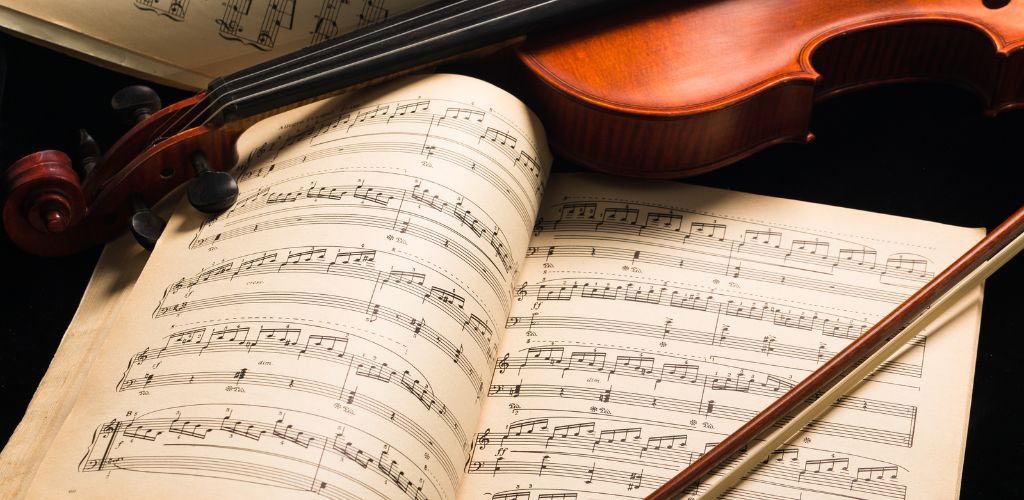
Dynamics in music are like spices in cooking. They range from pianissimo (very soft) to fortissimo (very loud), giving color and excitement to melodies.
Don’t forget that understanding time signatures will help you groove. They tell you how many beats are in each measure and which note value gets the beat.
Keep rhythm in your bag of tricks; it’s the heartbeat of the song, the music. Each note has a rhythm, dictating how long it’s played.
Articulations are the final touch—legato for smooth, connected notes and staccato for short, detached ones. They shape the character and structure of the music.
Your journey into music theory for the violin is a path of constant discovery.
Remember that every note tells a story. Enjoy every playful note, and let your passion for music shine!
Before you start practicing what you’ve learned here…
Knowing music theory and teaching yourself for violin is one of the best ways to improve yourself for this musical instrument. But, maybe you want to learn more about the violin itself and how to play it, this next article is the answer you’re waiting for! Read on!
FAQ's
While it is possible to play the violin without an extensive knowledge of music theory, understanding theory can greatly enhance your ability to read music, interpret compositions, and communicate with other musicians. A solid foundation in music theory can also facilitate faster learning and a deeper appreciation for the complexities of violin music.
The theory for the aspiring violinist encompasses learning how to read musical notation, understanding key signatures, scales, and rhythm, as well as grasping the principles of harmony and dynamics, which are essential for expressive playing. This theoretical knowledge supports the development of practical skills and helps violinists to interpret and perform a wide range of musical repertoire with accuracy and emotion.
Violin music is notated using the treble clef, which indicates the pitch of the notes to be played on the instrument. The notation includes staff lines, note symbols, key signatures, and various musical markings that dictate certain order of the melody, rhythm, dynamics, and articulation required for violin playing for the piece.



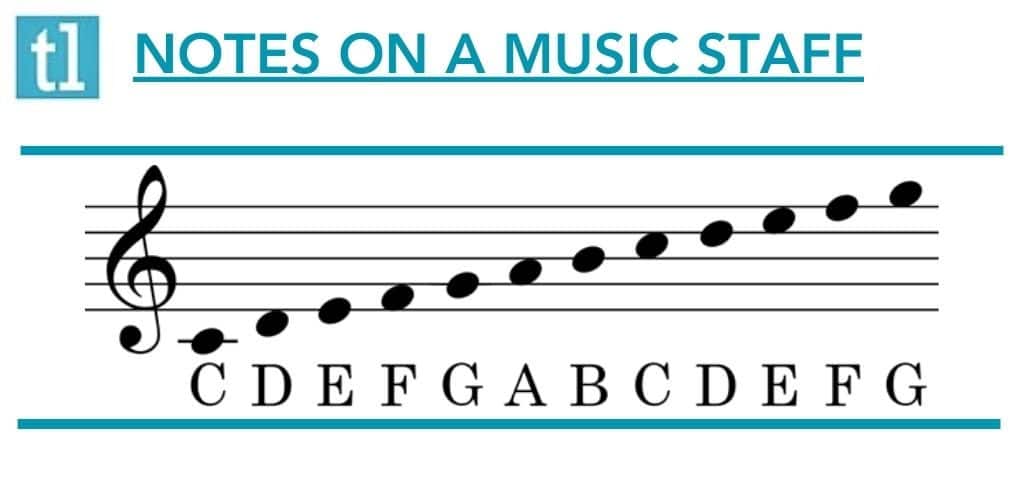
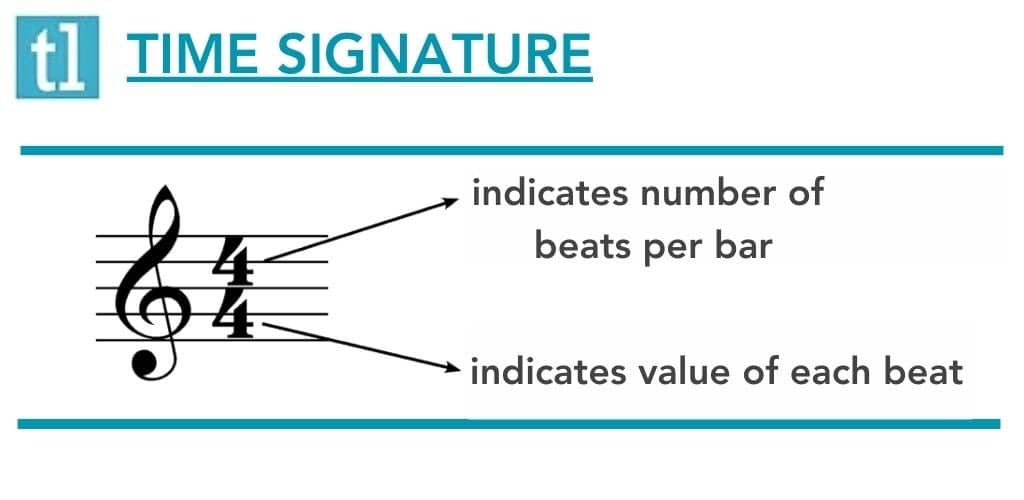






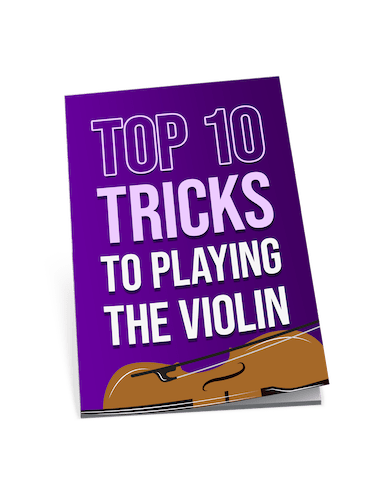
Hey, Robert Emery! Great outline. Quick q: For beginners, how often should we practice those major scale patterns? I wanna get good but not burn out, ya know?
Not Robert, but I practiced them daily for about 15 mins and saw big improvements. Hope that helps!
Alrighty, this is a solid rundown for starters n all but let’s talk advanced harmonic systems. I reckon they’re way more nuanced than just slappin’ some patterns together. Anyone dived deep into microtonality or just intonation on the violin? That stuff’s the next level and didn’t get a mention. Wondering what Robert’s take is, or if it’s too niche for this guide.